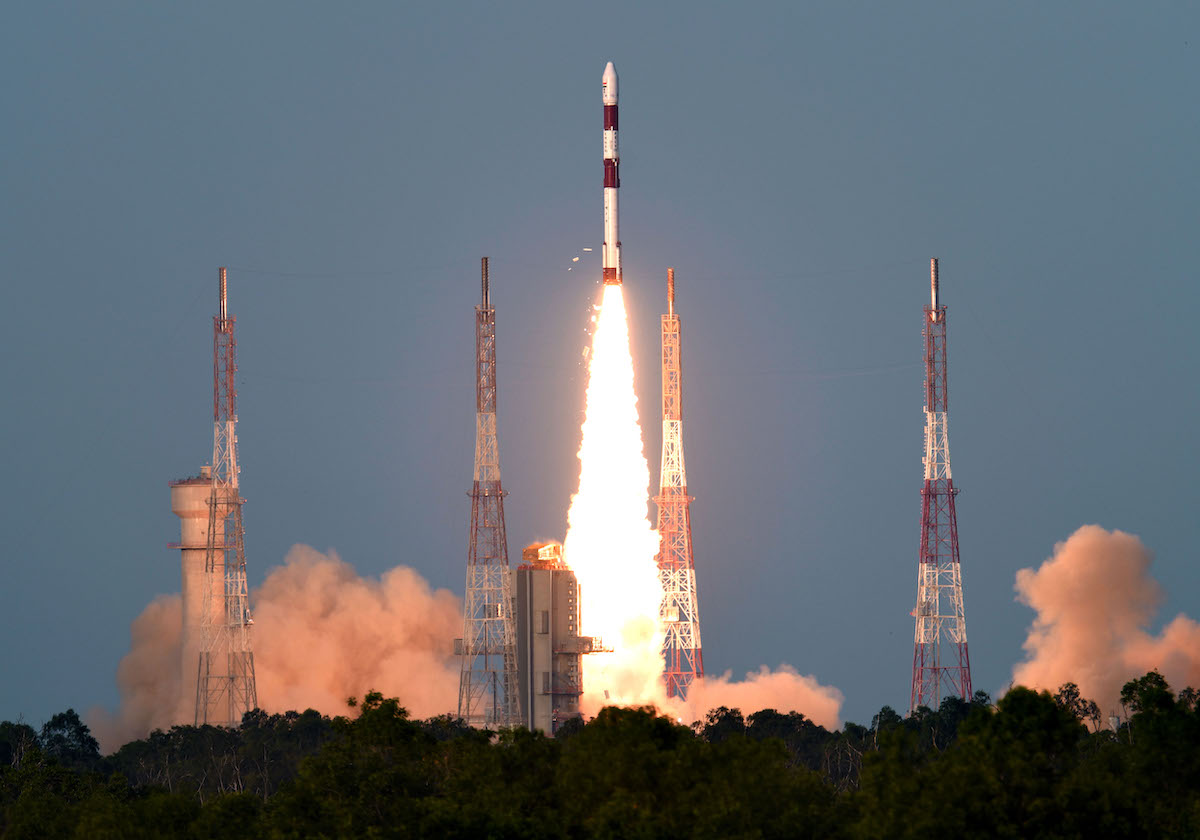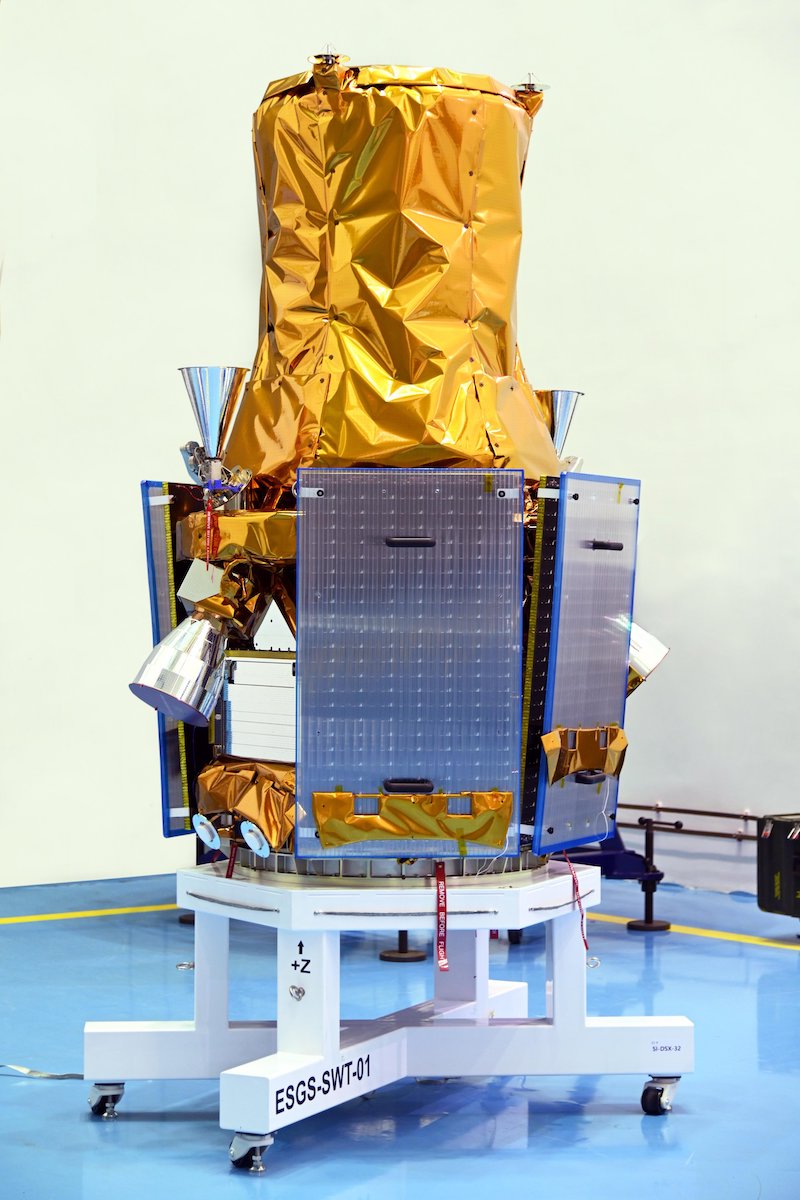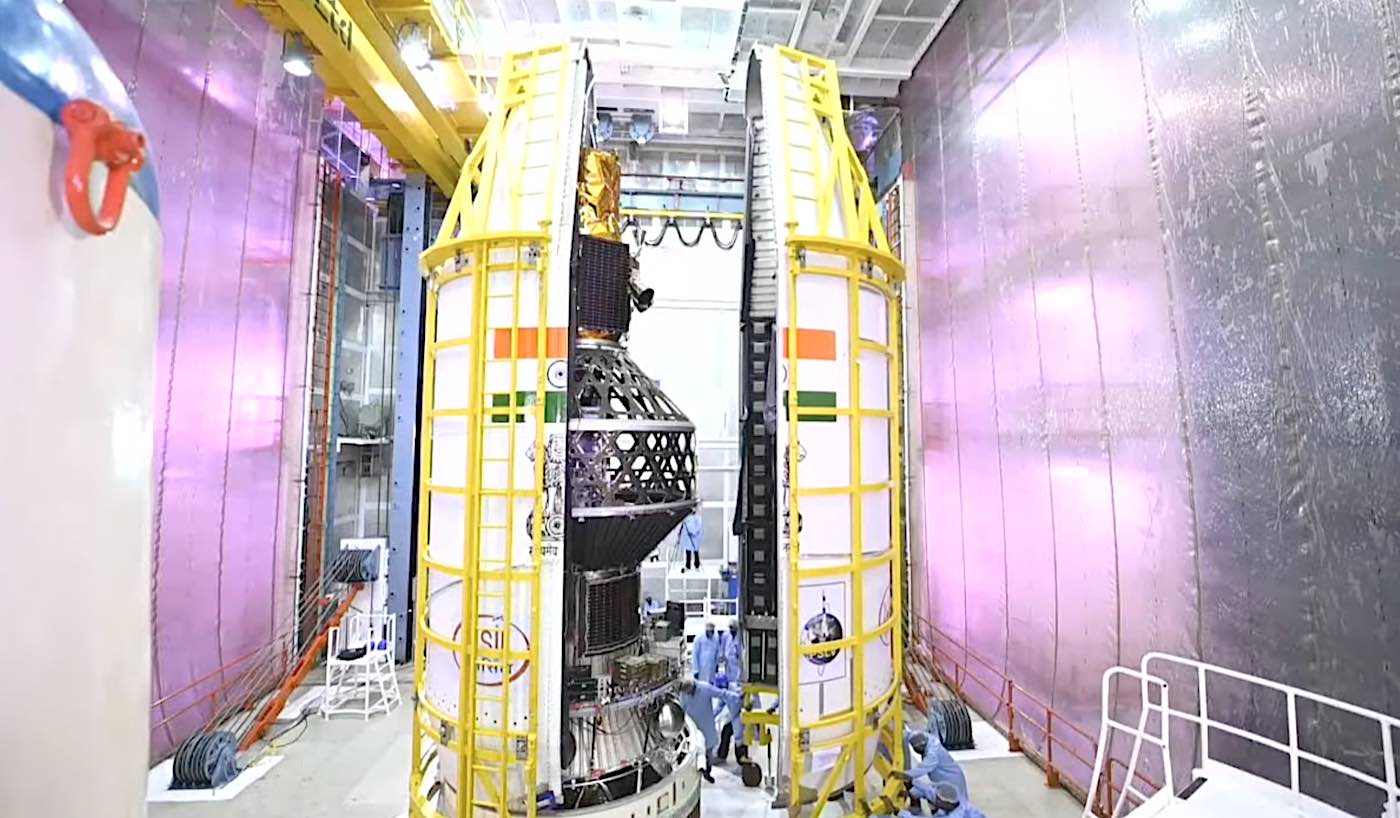
Three Singaporean satellites lifted off Thursday on an Indian Polar Satellite Launch Vehicle and rocketed into an orbit more than 350 miles above Earth to begin missions supporting military surveillance, technology demonstrations, and solar research.
The Polar Satellite Launch Vehicle, or PSLV, climbed away from its firing stand on India’s east coast at 8:32 a.m. EDT (1232 GMT) Thursday with more than a million pounds of thrust from its solid-fueled core stage.
The Indian launcher flew in its “Core Alone” configuration without any strap-on solid rocket boosters, sending the three Singaporean payloads into a 354-mile-high (570-kilometer) orbit inclined 10 degrees to the equator.
“All of the satellites were placed in the right orbit,” said S. Somanath, chairman of the Indian Space Research Organization, India’s space agency.
The primary payload on the mission was the DS-EO satellite, a high-resolution Earth-imaging spacecraft developed by ST Engineering and Singapore’s Defense Science and Technology Agency, the acquisitions and systems development division for the Singapore Armed Forces.
The DS-EO satellite weighed about 804 pounds (365 kilograms) at launch. In a mission overview posted on its website, ISRO said the DS-EO spacecraft carries an electro-optical, color imaging payload to collect imagery for “land classification” and serve humanitarian assistance and disaster relief needs.
Liftoff of India’s Polar Satellite Launch Vehicle on a mission to deploy three Singaporean satellites and test upgrades on the rocket’s upper stage to serve as an extended experiment platform. https://t.co/XzveSghAVY pic.twitter.com/IQxvdigWkN
— Spaceflight Now (@SpaceflightNow) June 30, 2022
In a speech last year, a senior Singaporean government official said the DS-EO satellite will also support the country’s national security.
The DS-EO satellite will “better meet the needs of Singapore agencies, such as for maritime security and oil spill detection, and allow ST Engineering to enhance their commercial imagery services,” said Teo Chee Hean, a senior minister in Singapore’s cabinet and the government’s coordinating minister for national security.
Singapore’s first radar observation satellite, named NeuSAR, also rode to orbit on India’s Polar Satellite Launch vehicle. The 341-pound (155-kilogram) NeuSAR satellite was built by DSO National Laboratories, a research agency for Singapore’s military, according to the Office for Space Technology and Industry, Singapore’s national space office.
The Singaporean national space office said NeuSAR is a pathfinder for a future commercial constellation of radar imaging satellites. The spacecraft hosts a synthetic aperture radar payload capable of providing images of Earth’s surface in day and night, and in all weather conditions, without the limitations on lighting and cloud cover for optical imaging satellites.
The NeuSAR satellite will image land and maritime regions, and is capable of detecting small changes between two passes over the same area. A constellation of six similar satellites could observe the same region every hour, according to Singapore’s national space office.

The DS-EO and NeuSAR satellites were built by Satrec Initiative, a South Korean spacecraft manufacturer that specializes in Earth observation missions. Video of the launch campaign in India released by ISRO showed Satrec engineers assisting in preparing the satellites for integration with the PSLV.
The third Singaporean satellite on the PSLV mission was SCOOB 1, a CubeSat developed at a Nanyang Technological University. The satellite is about the size of a shoe box, and carries a solar spectral sensor to make observations of the sun and its energy output.
After releasing the three Singaporean satellites into orbit, the PSLV’s fourth stage was expected to serve as an experiment platform with six Indian payloads. The upper stage was modified for extended operations, and includes solar arrays to generate its own electricity to support the hosted experiments.
The mission Thursday marked the second PSLV flight of the year, and the 55th flight of a PSLV since the launcher debuted in 1993. The launch was designated PSLV-C53 by ISRO.
After lighting its core stage motor, the 145-foot-tall (44.4-meter) launcher headed east from the Satish Dhawan Space Center to place the three Singaporean payloads into orbit. The solid-fueled first stage burned out and jettisoned nearly two minutes into the mission, and a hydrazine-fueled second stage engine ignited to continue the climb into orbit.
A third stage solid motor and a liquid-fueled fourth stage finished the job. The DS-EO spacecraft deployed from the PSLV’s fourth stage about 18 minutes after liftoff, and the two other satellites separated about a minute-and-a-half later.

The launch Thursday was the second dedicated commercial launch managed by NewSpace India Limited, or NSIL, the commercial arm of the Indian space agency, following a PSLV mission earlier this year with a Brazilian Earth observation satellite.
NSIL was established in 2019 as part of a reform of India’s space program to a more market-based orientation, rather than a government-driven paradigm. NSIL is responsible for securing international and commercial business for the Indian satellite and launch industry.
Another Indian satellite mission — the GSAT 24 communications spacecraft — launched June 22 on a European Ariane 5 rocket. NSIL was also responsible for developing the satellite to provide commercial communication services over India.
“Congratulations to NSIL on accomplishing yet another major mission this month, the first being the GSAT 24 launch,” Somanath said.
Email the author.
Follow Stephen Clark on Twitter: @StephenClark1.
